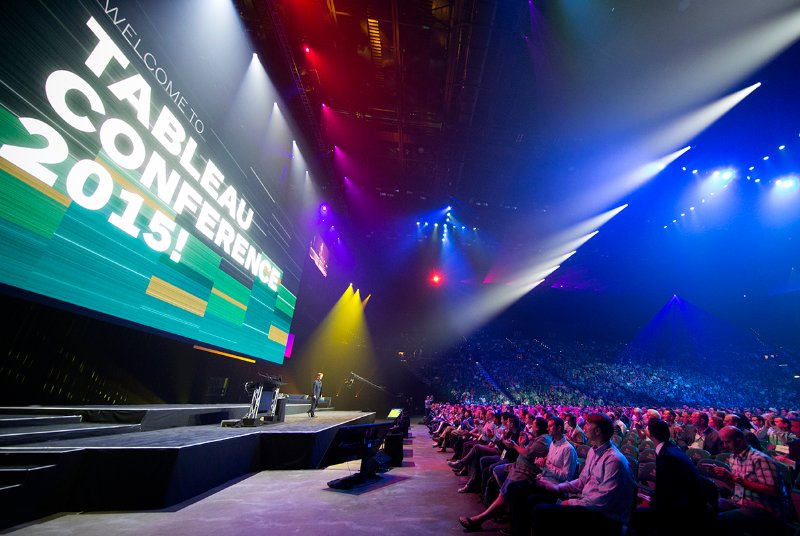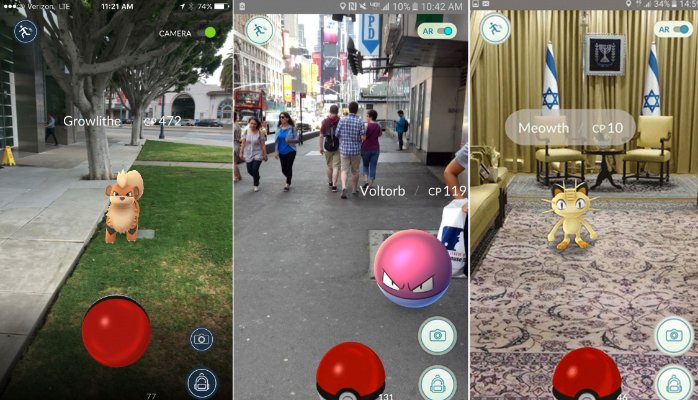Leads, Gotta Catch ‘Em All: B2B Marketing Takeaways from Pokémon Go
Fun! Social! New! Pokémon Go ticks all the boxes of the perfect viral storm. The game has caught on like wildfire not only with people that grew up with Pokémon, but also first timers who just found out about it. In a matter of days, the Pokémon pandemic has dominated my Facebook, Twitter and LinkedIn feeds and drowned out politics and civil rights issues. I’ve overheard chatter about it while making iced coffee in the cafeteria of The Yard on the Upper West Side. I saw two boys discussing tactics and showing each other their iPhone screens while I was walking my dog Iggy through Central Park. Long story short—the success of Pokémon Go is any marketer’s wet dream!

You probably heard about Pokémon Go from all of the ads you’ve been seeing on Facebook, Hulu and TV, right? Wrong! Actually, Niantic Labs together with Nintendo and Pokémon Company, have done relatively no marketing whatsoever to drive the success of their game[1]. In fact, the only real marketing that was done was by Nintendo America when they tweeted its availability in the US.
B2B Marketing & Pokémon Go
Many marketers frequently forget that the people that B2B marketers market to are still people. That’s right, they may be marketed to in a certain capacity, but at the end of the day, they’re still people. That means that they like the same things as people and respond to the same hierarchy of needs as regular people.
Exposure kicks off the beginning of the B2B funnel. It’s the point where prospects start developing their emotional gut response to your brand. This is a make or break moment for most of your first-time prospects that may not be familiar with your brand. If we take the example of Pokémon Go, we can learn a few things from our first exposure to Pokémon plague that has swept across the nation at exponential speeds!
Pokémon is Fun & B2B Marketing Has Room For Improvement in the Fun Department
Everyone likes fun! Not just kids (or 33-year-olds) playing games on their phones, but CEOs, CTOs, managers, directors, doctors, janitors, lawyers, programmers—everyone! I won’t go into what makes Pokémon fun, but we can say that it’s lightheartedly enjoyable and amusing.
People want to be delighted and entertained. Games and fun build brand loyalty. They leave the audience with a positive gut feeling about the brand—one that makes them feel good inside. B2B marketing should do the same. All too often campaigns are dull and heavy and void of any fun or enjoyment.
Jethro, where I hail as head of marketing, is a software start-up that accelerates business intelligence performance on big data, most notably Hadoop. I probably lost you at that one (in its most basic sense, we make charts and graphs load fast in Tableau). We cater to a very niche market and our main personas are comprised of Database Architects, Database Engineers, System Architects, CTOs… you get the point. Let’s just say that I’m not marketing Coca-Cola to kids in the summer time. Despite the extremely technical nature of the marketing, I’ve been toying with ways to make lead generation and brand exposure more fun.
We’ve had various gated white paper campaigns running on Twitter and LinkedIn for some time. I’ve A/B tested the artwork, text, colors and fine-tuned the audience. I’ve seen some solid results from these campaigns, but nothing like my last marketing endeavor, a quiz.

Instead of the usual boring content, I crafted a big data quiz designed to appeal to the personas that we market to. I wanted it to be short and sweet, but also challenging—I’m marketing to tech peeps, who love to solve puzzles and quantify their worth (by proving they know everything, of course!). The quiz brought in thousands of new visitors and generated hundreds of leads, which is a formidable amount for a B2B niche market. It generated enough buzz online to be liked on Facebook 3.7k times and shared 56 times—not bad for B2B on Facebook! The comments were relevant and opened a discussion about the product. Soliciting users for a boring white paper would never generate such a viral response.
There have been amazing B2C campaigns revolving around having fun. One that comes to mind is Volkswagen’s “Piano Stairs” from 2009. Their theory is that the easiest way to change people’s behavior is by making it fun. Most B2B marketing campaigns that attempt to be fun, really miss the point and end up being corny and not cute. Us B2B marketers need to try harder and think of ways that people will want to be exposed and engage with our brands without feeling like they’re being “sold.”
Pokémon is Super Social. B2B Marketing Can Be Too.
Social indicators are a powerful marketing force. In B2B customer testimonials play an important role and many times even just a co-branded logo from a big name can go a long way in generating leads. Trust icons aside, customer webinars and other customer-focused content, like videos and use cases, go a long way in earning trust. If you see other companies using your brand, it must be good!
One of the reasons Pokémon Go spread so quickly because it is social in nature. The game encourages users or “trainers” to go out in the world and interact with other players and landmarks, which the games transforms into Pokéstops and Gyms using the games layer of augmented reality. People see that their friends and other people are playing this game and immediately they want to join the party. They know that other people are using it so it must be fun. More than fun, however, is it’s interactive and social—and social in the old-fashioned face-to-face sense and not just the virtual one.
I’ve been to myriad B2B conferences in diverse areas including Travel, Casinos, Forex, Hadoop, Business Intelligence and more. Most of these shows have been impossibly boring. The production was impeccable, and all of the booths were lovely. But they weren’t very fun—and aside from people pouncing on attendees, they weren’t very social either. I’ve seen attempts at fun—usually in the form of a “games area.” I was at a show once with a rock-climbing wall that nearly no one touched the entire event. It seems like they didn’t really know their audience.
One notable exception is the Tableau Conference, which I had the pleasure of attending last year in Vegas. Yup, that’s right, THE PLEASURE of attending. I’m not sure if I can say that for most shows. The shows were not only fun, but they were social! Tableau’s marketing is clever in that it fosters a sense of community. To use Tableau is to belong to a tribe of Tableau users.

Our company, Jethro, was exhibiting at the conference and one thing that really stood out was how many of the prospects at the show were either novice Tableau users or have yet to even use Tableau. WHAT?! These people are actually paying upwards of a grand to go to a convention for a product that they’ve yet to even use? Yup. It’s true. Genius. Just like in Pokémon Go, they want to join the party.
Most People Have Anxiety In New Social Settings
If you’ve ever been to a B2B meet-up, or any gathering for that matter, you’ll notice that people want to be social and talk to people but they’re simply too socially awkward. The same can be said about dating and is probably the reason why liquid courage and wingmen are such a necessity in the real-world.
If there’s one magic thing that Pokémon Go can teach us, it’s how to bring the introverts out of their shells. Marketing is all about engaging people and shaping their opinions and actions. This game has accomplished just that. Using a game to bring people together and engage with one another could prove very beneficial–especially at meet-ups, which are usually fraught with socially awkward people. The same goes for conferences. If we take a cue from the dating world–it would be like a guy using a game to hit on a girl on Tinder.
Pokémon Uses New Technology – So Should B2B Marketers
Novelty is a powerful and seductive force. People love to see and try new things. Us marketers know this–it’s the reason why they write “New & Improved” on the same cereal that’s been around for 70 years. A lot of Pokémon’s meteoric success rests in the fact that it brought a new technology to the masses. Yes, augmented reality has been around for a few years, but no one has really figured out how to make it really catch on.
We should always be on the look-out for new and novel ways to market our brands to our prospects. Don’t be afraid to try new technologies and marketing channels and think how they can work for you. Perhaps be literal and try to market your brand using augmented reality. Maybe just figure out how to gamify your product or brand and make it fun. Perhaps host a meet-up and get everyone to play a game on their phones and the scores show up on a leaderboard–acting as an ice breaker and a competition.




Leave a Reply
Want to join the discussion?Feel free to contribute!